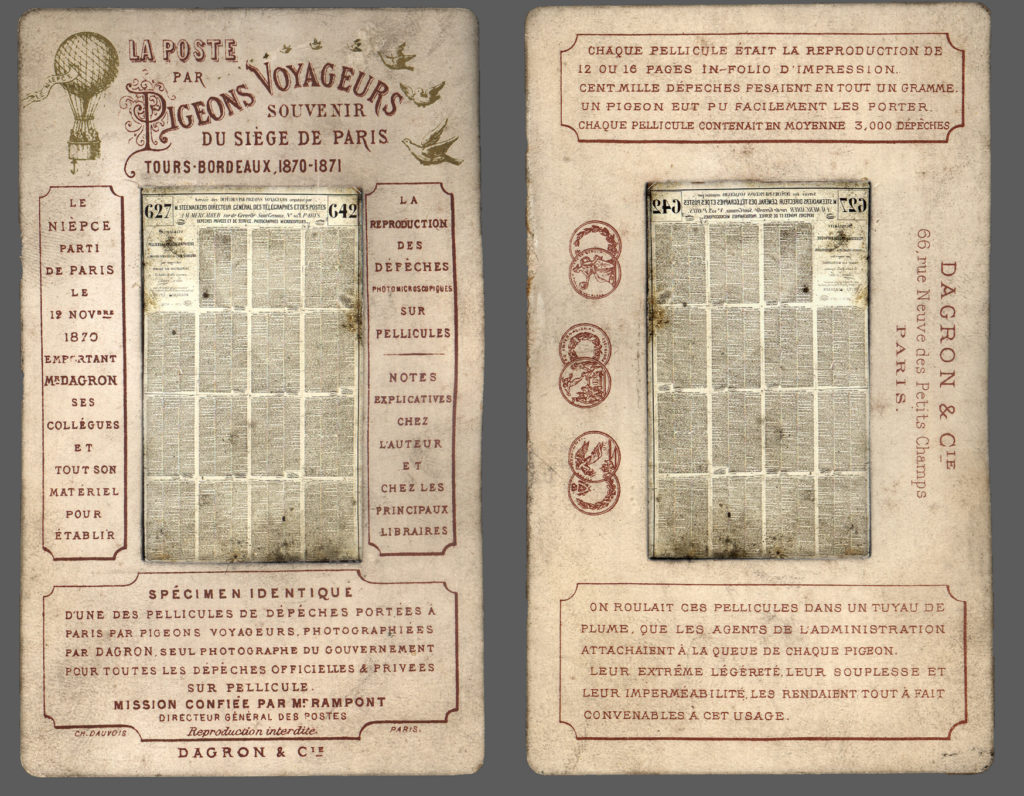The first film
Well before the appearance of the first George Eastman film, a first example of a film emerged during the Franco-German war of 1870. On this occasion, important documents were reduced photographically onto a piece of collodion and then flown by pigeon to the besieged Parisians.
Prudent René-Patrice Dagron, chemist and photographer, invented a camera towards 1860 that could produce photographic views less than 2mm square. A moving glass plate carrying 9 lens reproduced the picture as many times as required to fill the sensitive plate.
Cut out straight from the plate, these tiny photographs could be affixed to various articles, such as jewels, pen-holders or other tourist items. They were applied by means of gluing with a cone acting as a magnifying glass, the Stanhope lens.
Airmail, set up after a meeting with Nadar, proved very useful during the war of 1870. Dispatches and mail were reduced onto a collodion film. This light and flexible material was taken after treatment from the glass plate, which acted as its medium, then rolled into a feather tube, which was finally fixed to a homing pigeon’s tail. The animal could thus carry up to 18 films the size of a quarter of a playing card, each containing the equivalent of 16 folio pages. All weighing less than a gram!
The first film was born.


